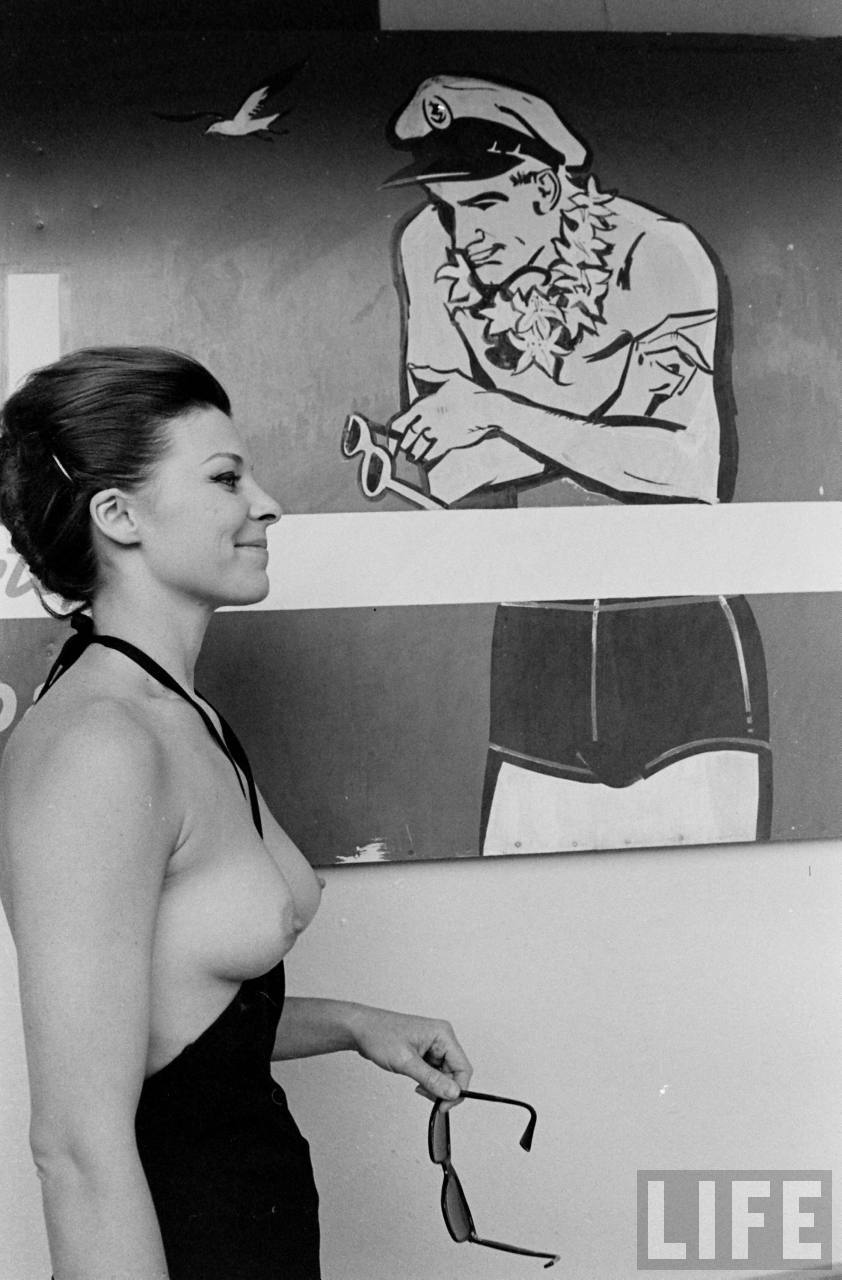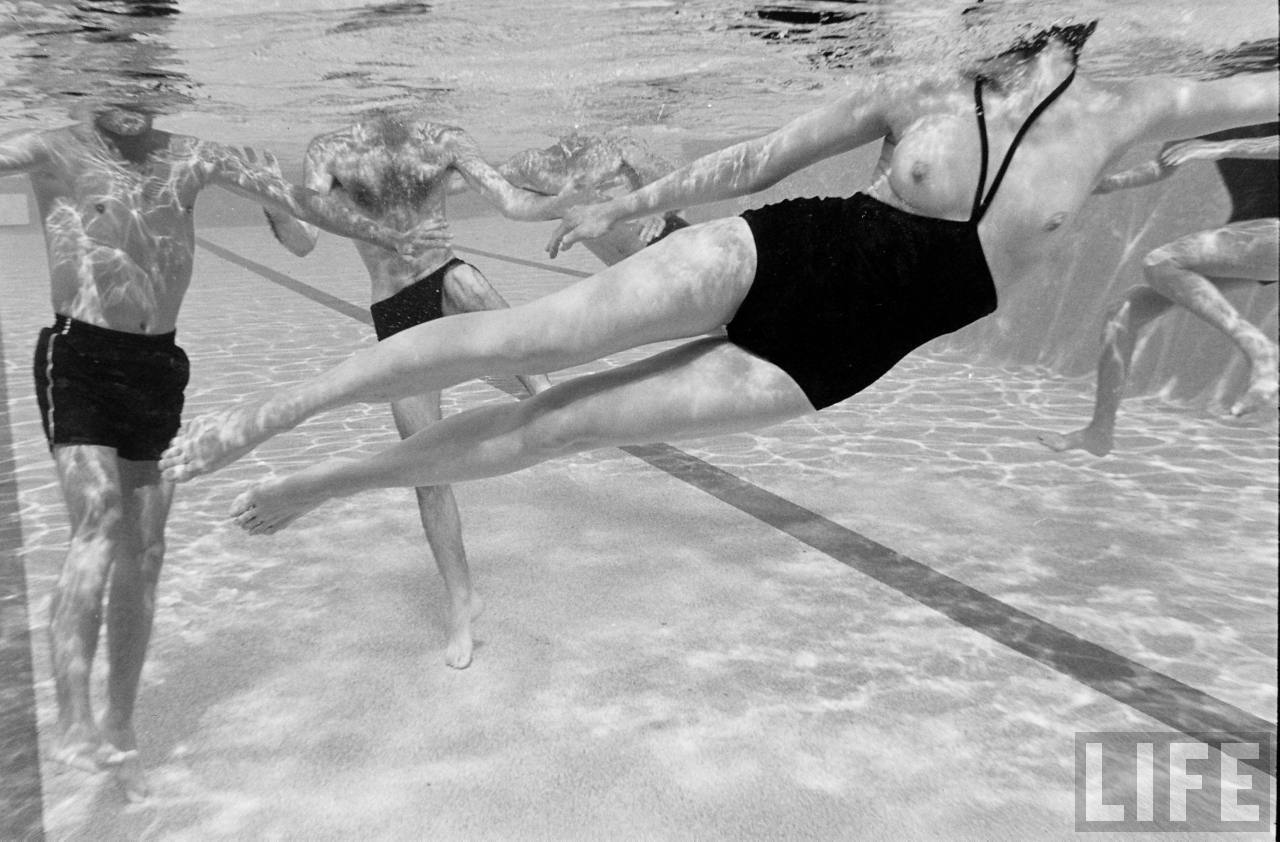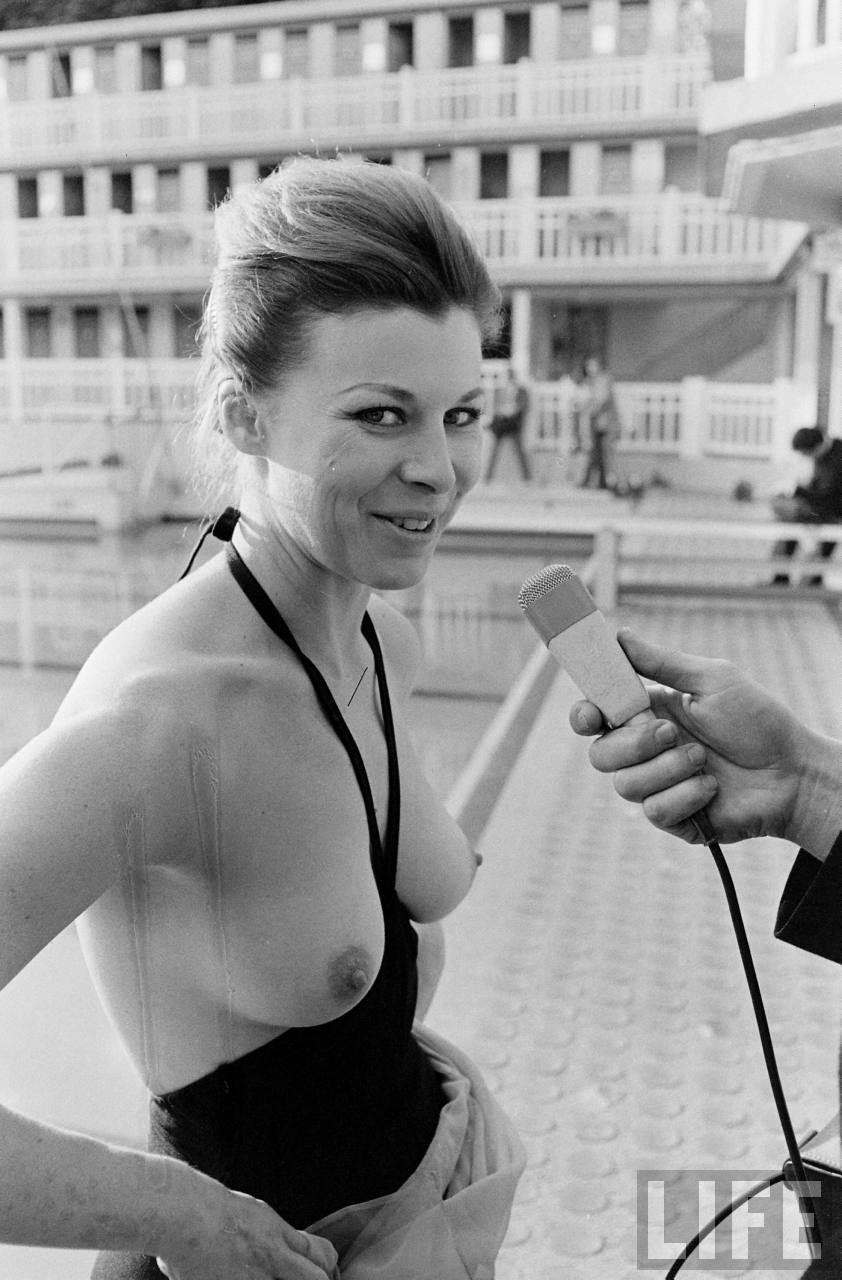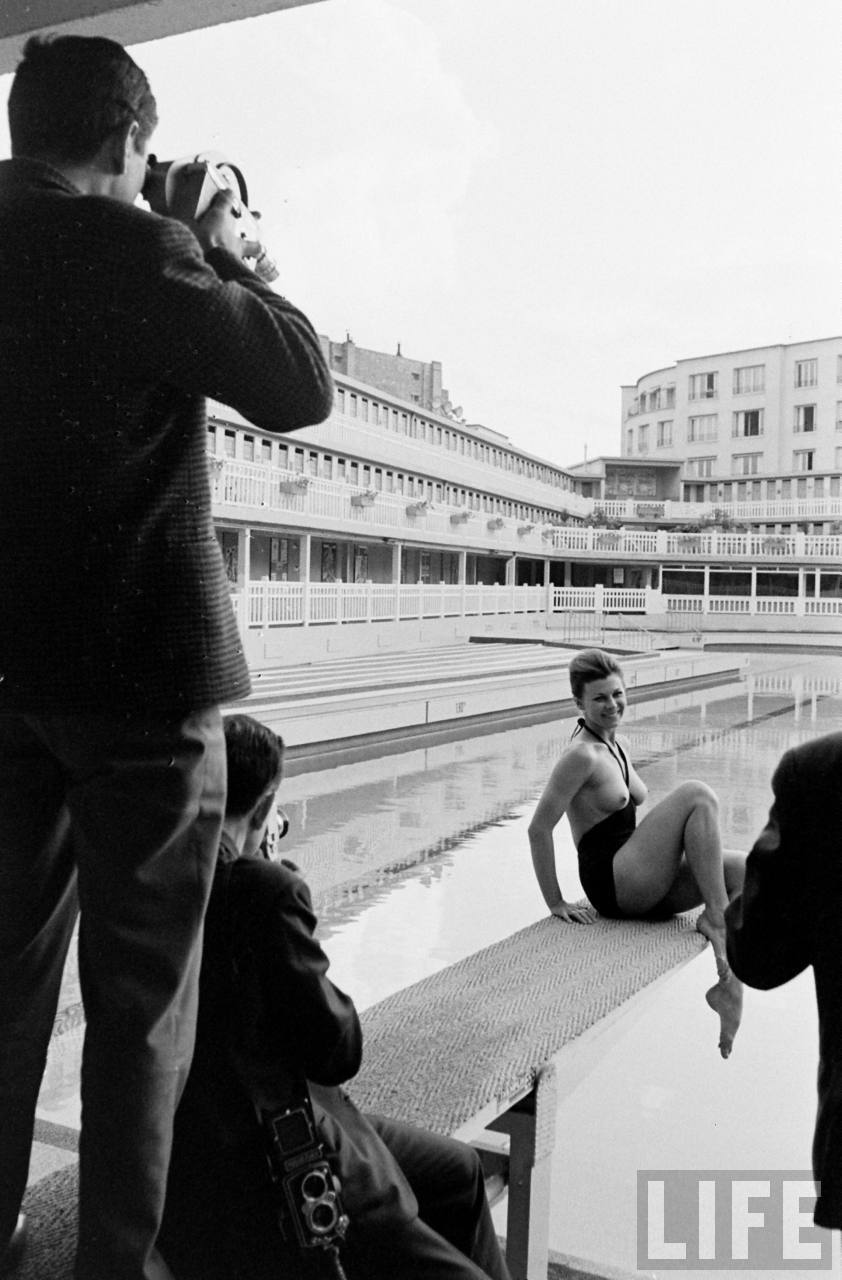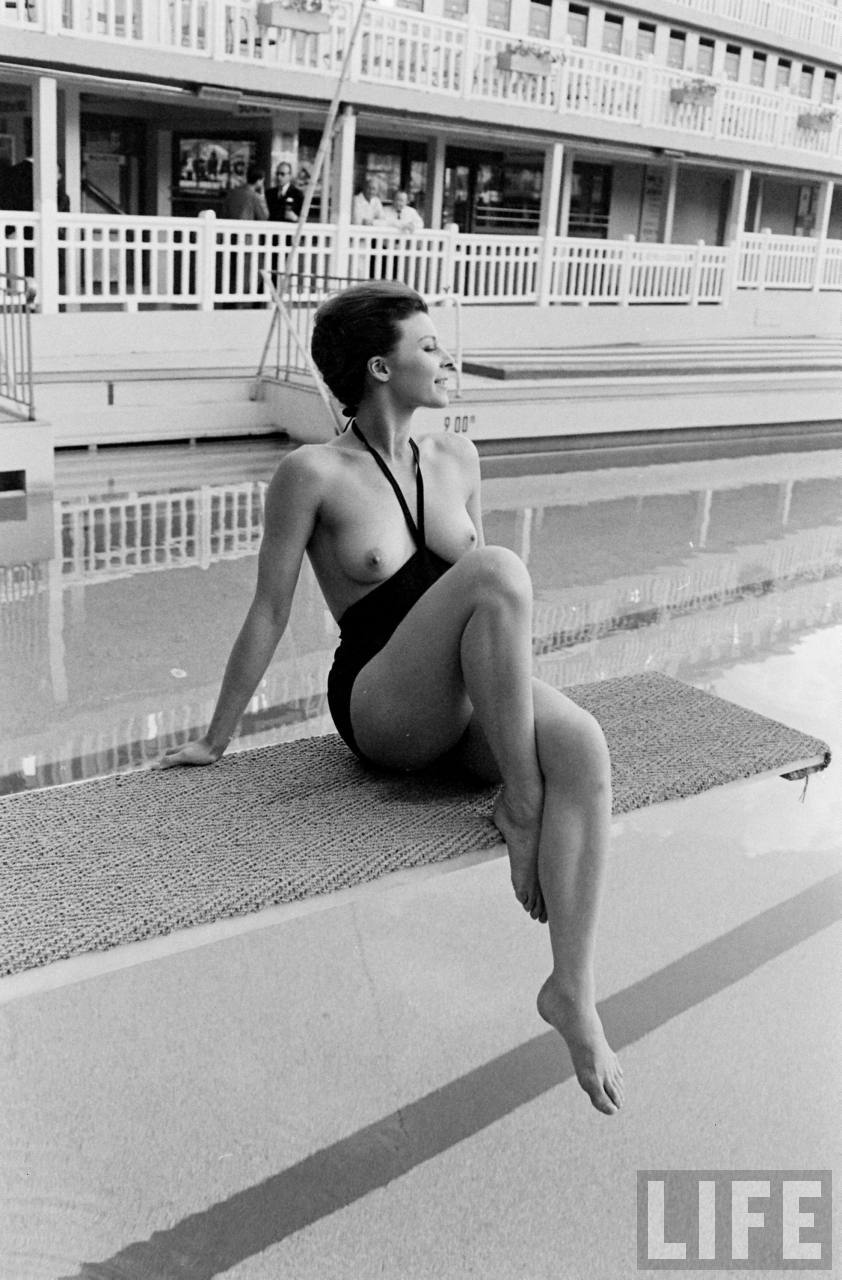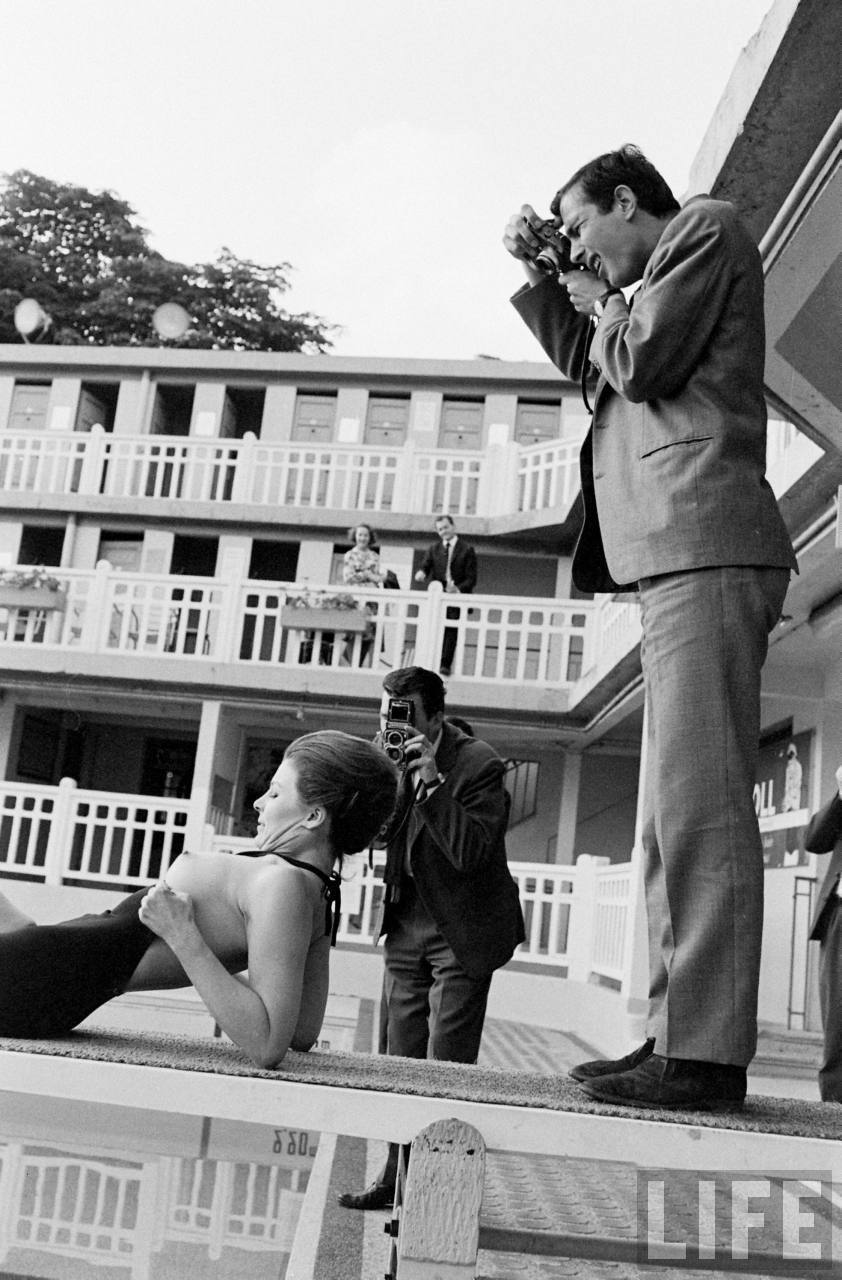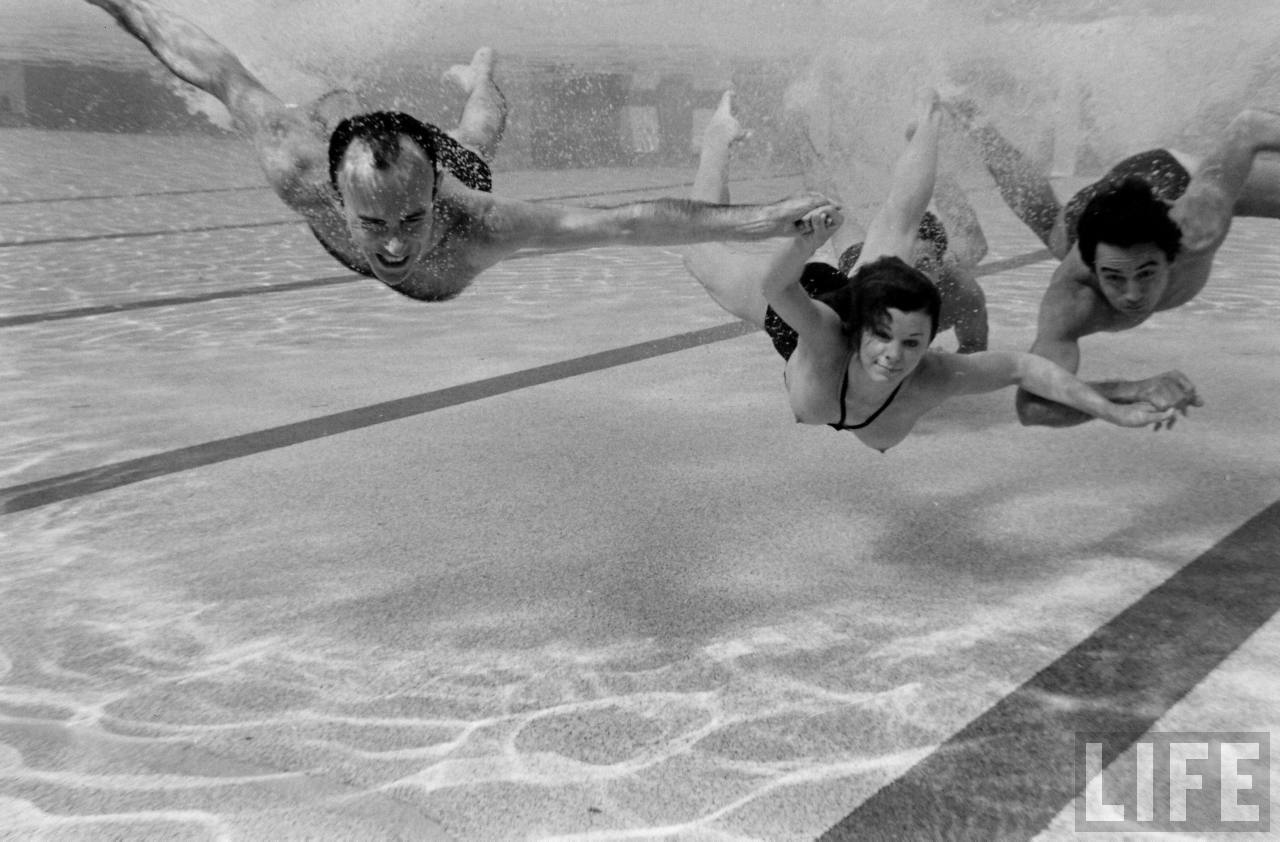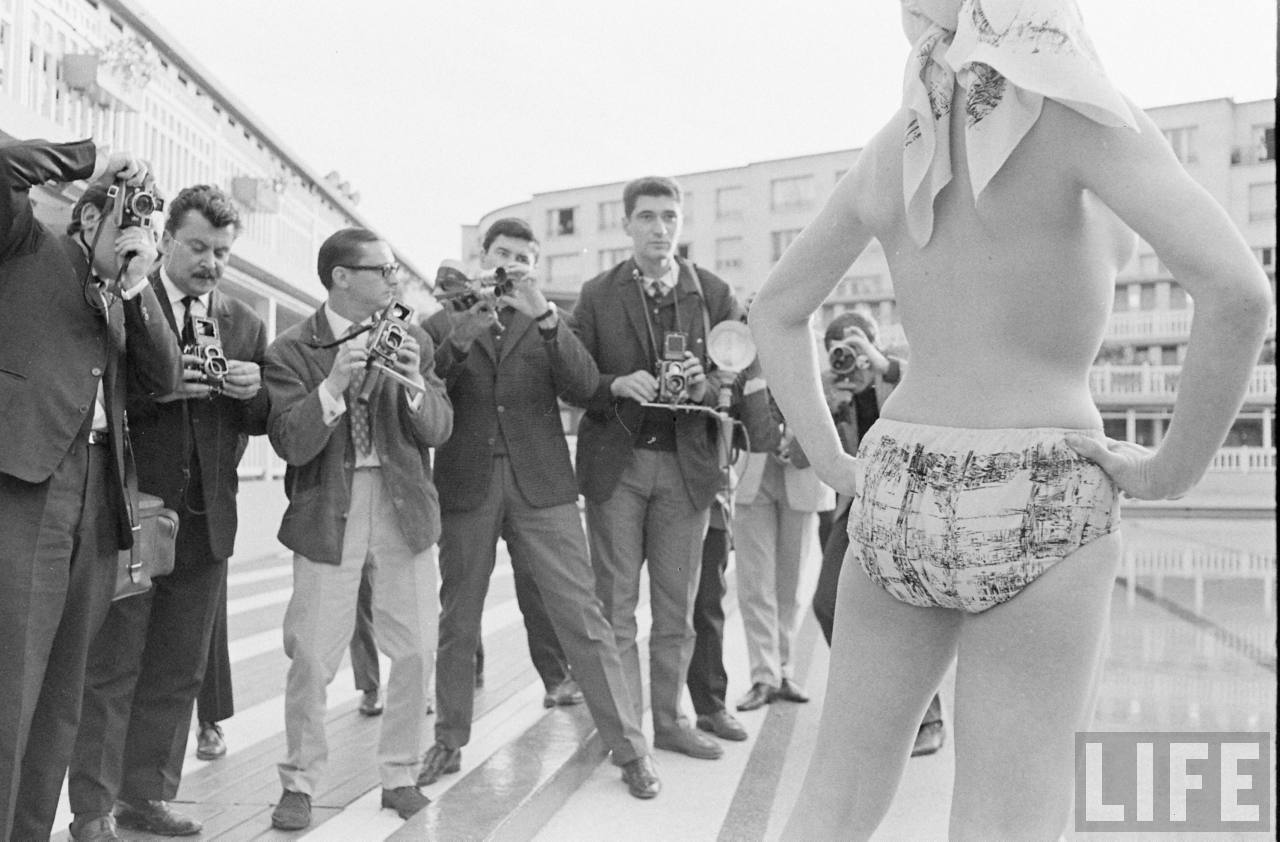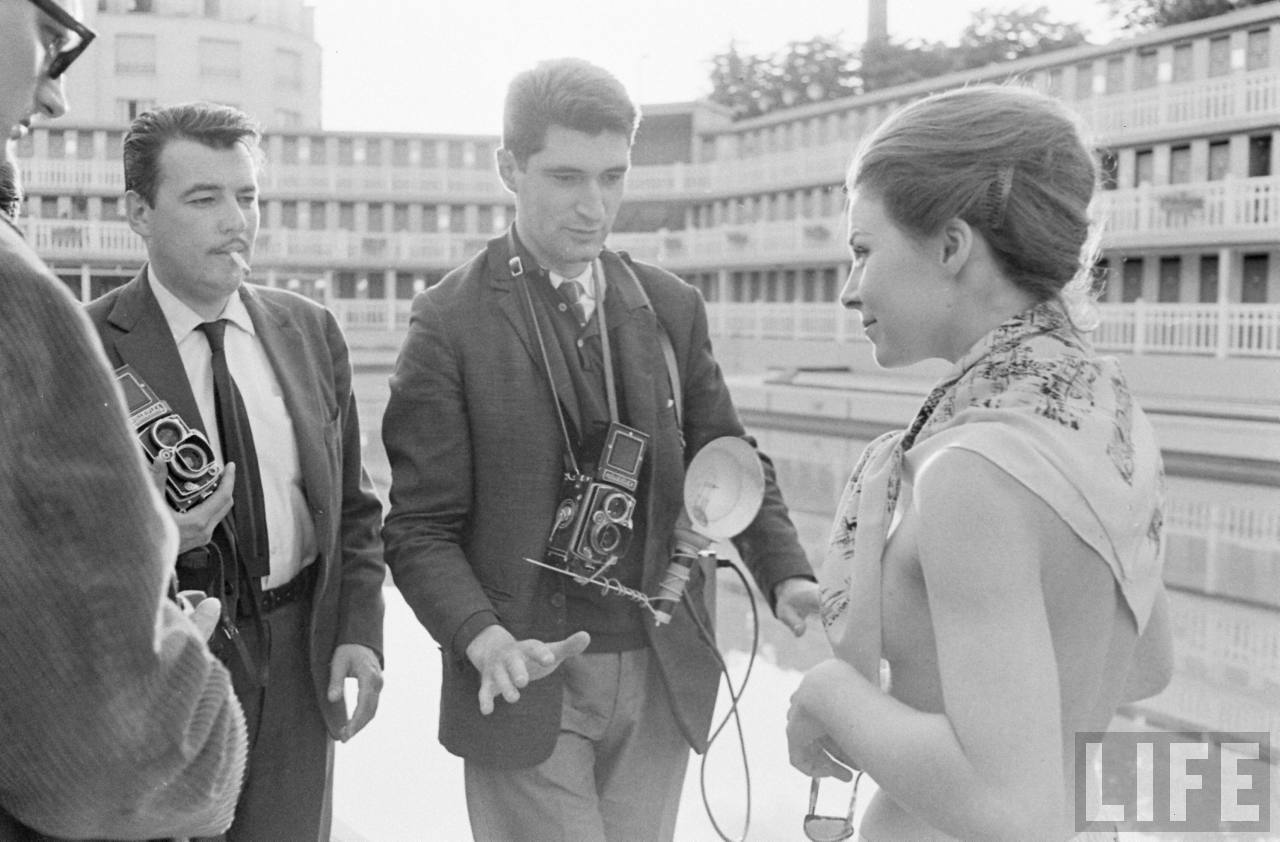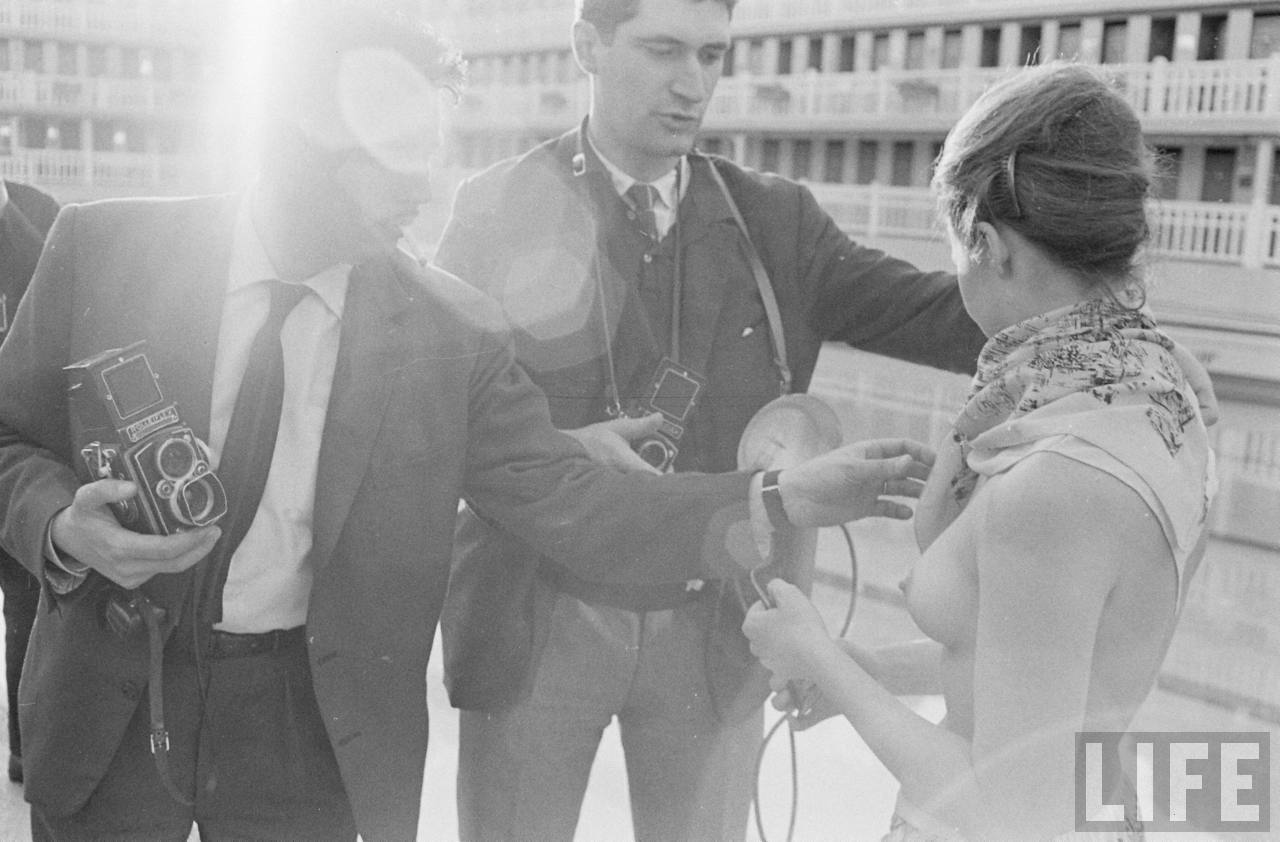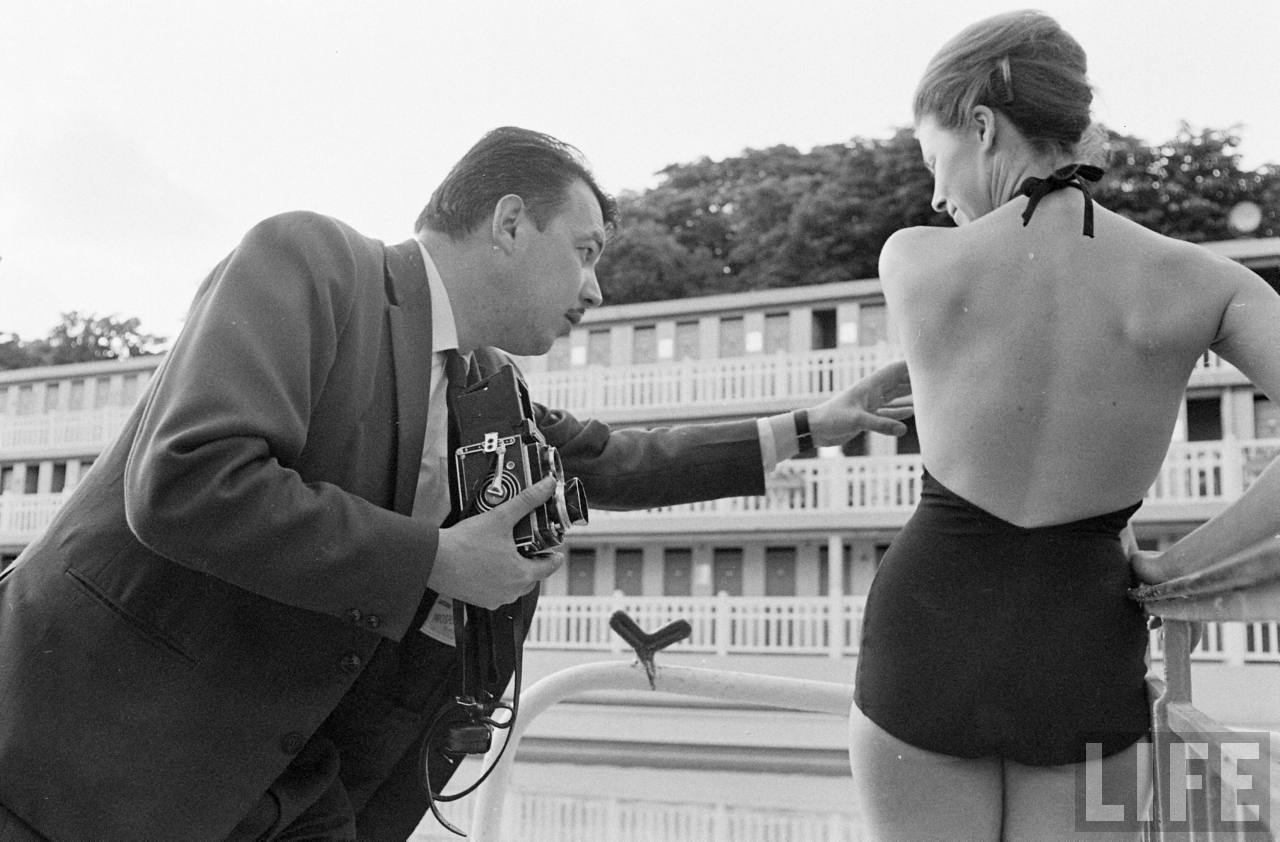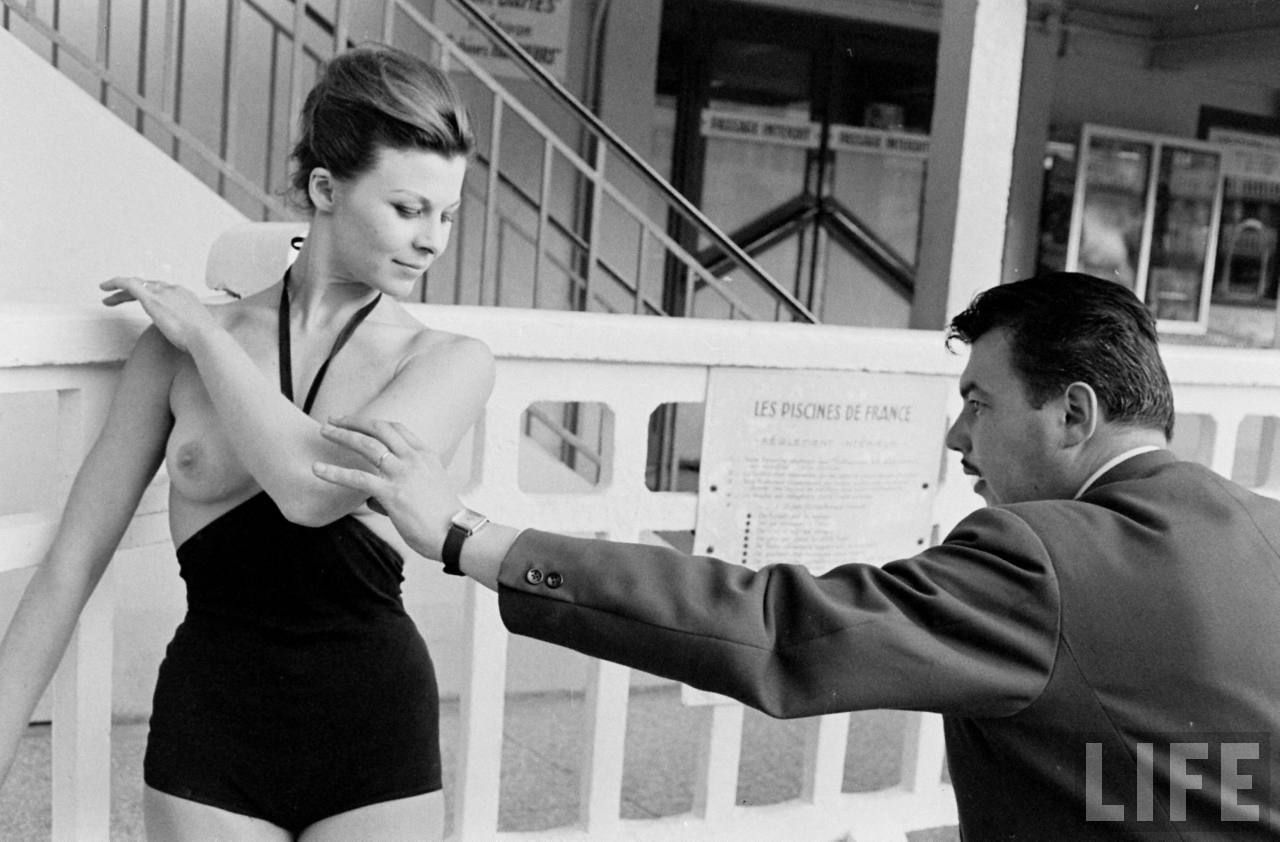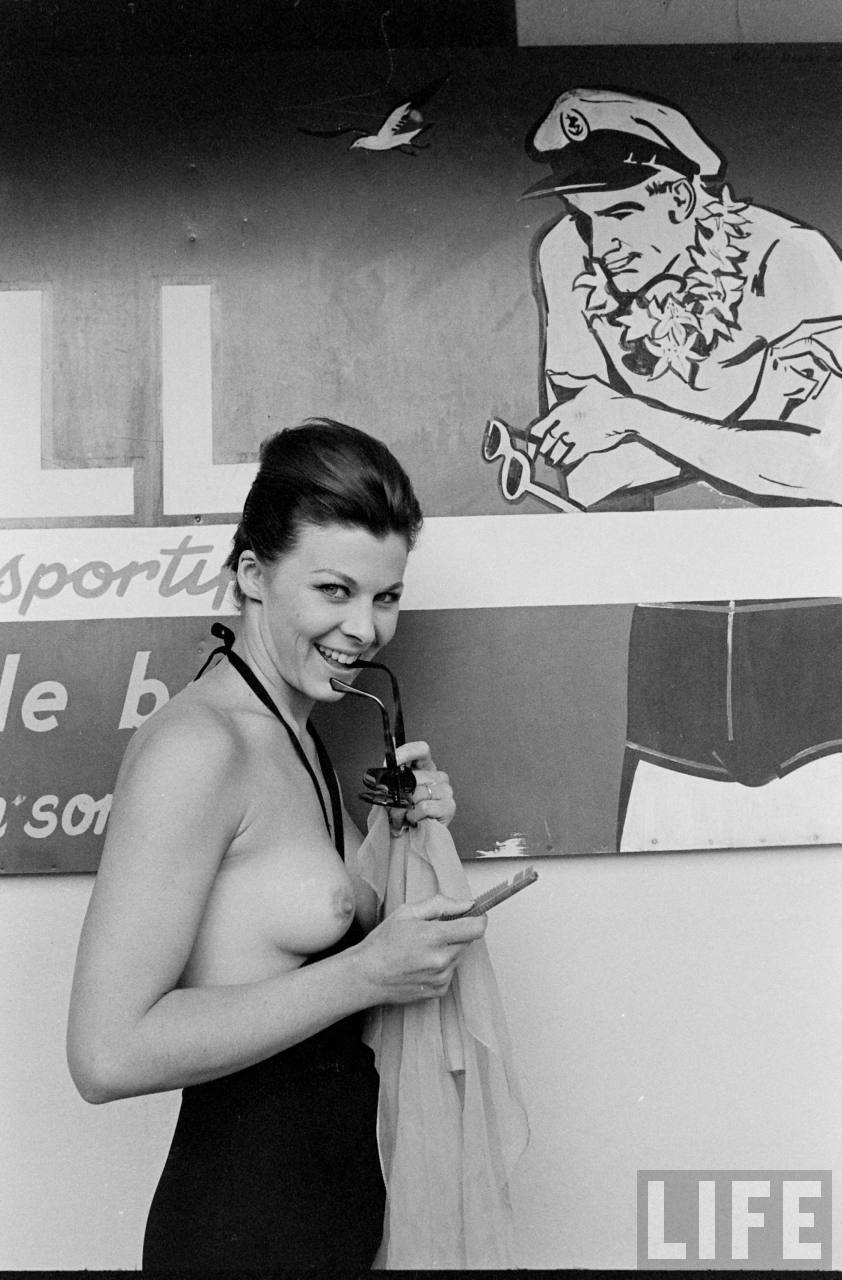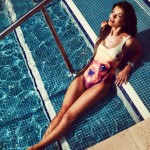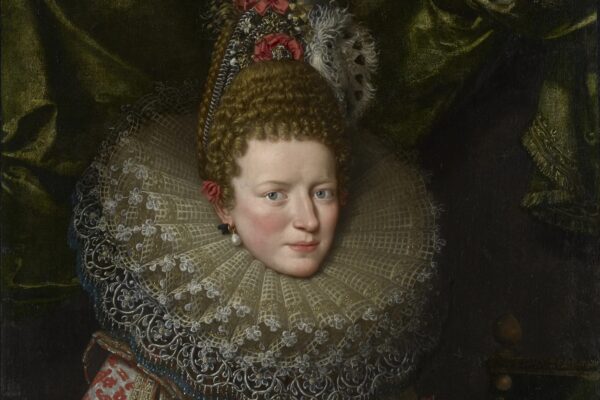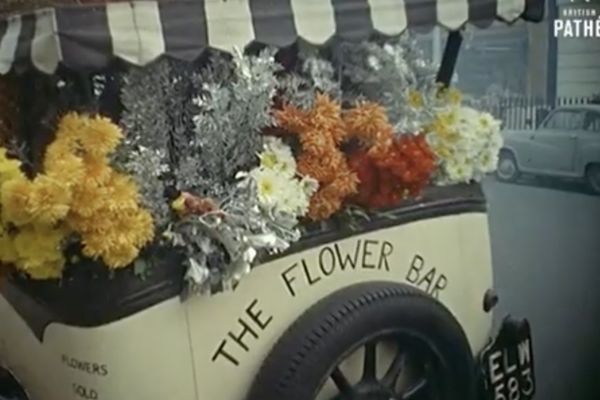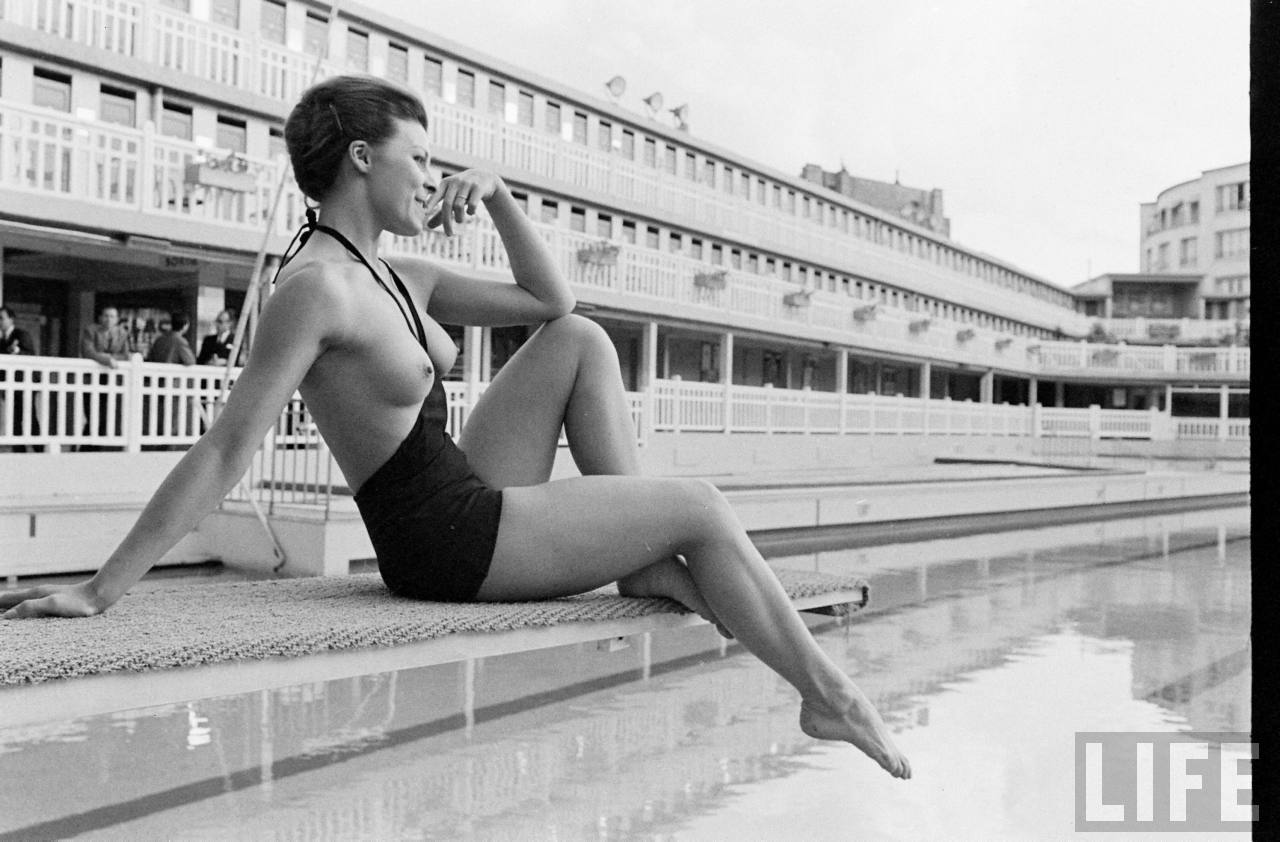
When we think of the monokini today, we picture those fiddly one-piece swimsuits that give you awkward tan lines, popularised by the Kardashian and Hilton sisters. But the first monokini was in fact originally a topless swimsuit that exposed the female breasts, conceived in 1964 by avant-garde designer Rudi Gernreich, who predicted (rather accurately) that “bosom will be uncovered within five years.”
While the design initially had a harder time catching on in the United States (the first American model to pose in the swimsuit, Peggy Moffitt, received death threats), the monokini appears to have found itself more at home unsurprisingly in Paris, at the legendary Piscine Molitor, where the first bikini was revealed to the world nearly twenty years earlier in 1946…
In this press shoot I found in the LIFE archives, photographer Paul Schutzer captures model Daphne Dayle showing off the topless design for a pack of hungry male journalists.
The suit’s creator, Rudi Gernreich, was an Austrian-born American fashion designer and early gay activist who had learned about female fashion in his aunt’s dress shop in Vienna. Rudi and his mother fled Austria after its annexation to Nazi Germany, where Hitler had banned nudity, among many other acts. Austrian citizens were advocates of exercising nude, a rejection of the over-civilized world. Gernreich was very much against sexualization of the human body and the notion that the body was essentially shameful, which was reflected prominently in his designs…
Widely censored in the media and renounced from all corners including Vatican officials and the U.S Republicans, who tried to blame the suit on the Democrats’ stance on moral issues. Even the Soviet Union chimed in, calling it barbarianism. Never intended by the designer to be a commercial success, over 3000 monokinis at $24 were sold in New York in the summer of 1964 at leading store like Henri Bendel. The monokini greatly influenced the sexual revolution by emphasizing a woman’s personal freedom of dress, even when her attire was provocative and exposed more skin than had been the norm during the more conservative 1950s.
The Peggy Moffitt photograph became a celebrated image of the extremism of 1960s designs and raised the feminist issue of whether both genders should be allowed equal exposure above the waist. In its December 1962 issue, Sports Illustrated declared that Rudi Gernreich had “turned the dancer’s leotard into a swimsuit that frees the body. In the process, he has ripped out the boning and wiring that made American swimsuits seagoing corsets.”
It had all started the year prior in 1963 when the editor of Look magazine, Susanne Kirtland had asked Gernreich to make the suit to accompany a trend story along futuristic lines. When a photo shoot for his topless swimsuit was arranged on Montego Bay in the Bahamas, all five models for the session outright refused to wear the design. The photographer finally persuaded a local prostitute to model it. Only the back view of the monokini ended up being published in Look in 1964, but it was Kirtland who pursuaded Gernreich to produce the design commercially and make it available to the public.
In June of 1964, the PR manager of the Condor Nightclub in San Francisco gave one of the waitresses the monokini designed by Gernreich to wear for her act. At that moment, Carol Doda, a former prune picker became the first modern topless dancer in the United States. Within a few days, women in clubs all the Broadway St. clubs of San Francisco were sporting the monokini in many of the clubs lining San Francisco’s Broadway St, effectively reinventing the burlesque era of the early 20th century and ushering in the era of the topless bar.
Carol Doda was later arrested in 1965 for indecency which sparked a protest outside the police department calling for her release. The monokini had made the former prune picker a symbol of sexual freedom.
Funnily enough, Rudy was also well-known for his revolutionary designs that actually covered the breasts.
In the same year he released the monokini, Rudy also invented what we essentially know today as a seamless soft-cup elastic bra. The “No-Bra”, as he named it, was made of sheer-stretch fabric without underwires or lining of any kind. In 1972, he then designed the “No-Bra Bra”, which was made of sheer, stretchy fabric that could be pulled on over the head. His minimalist designed revolutionized bra design, changing the trend from a sculpted, bullet-shaped bosom to a more natural shape. (Thanks for that Rudy!)
The topless monokini went on to reach its highest popularity level during the 1970s but has since been revisited numerous times in magazine shoots, worn by supermodels such as Kate Moss and Laetitia Casta.
Here we see our model Daphne in another of Rudi’s swimwear variations which became popular in the 1980s, a style known as the unikini– essentially, wearing only the bikini bottoms. In 1985, Rudi Gernreich unveiled his last design before his death, known as the pubikini, a bathing suit with a V-shaped opening that exposed the pubic area. This one didn’t catch on as well.
Boys hard at work…
Eyes on the job…
We appear to have a grabber on the left.
And again, going in for the grab.
Aaand again. This might have been a re-occurring problem with the monokini.
Alright back-off buddy.
All images from the LIFE Archives


